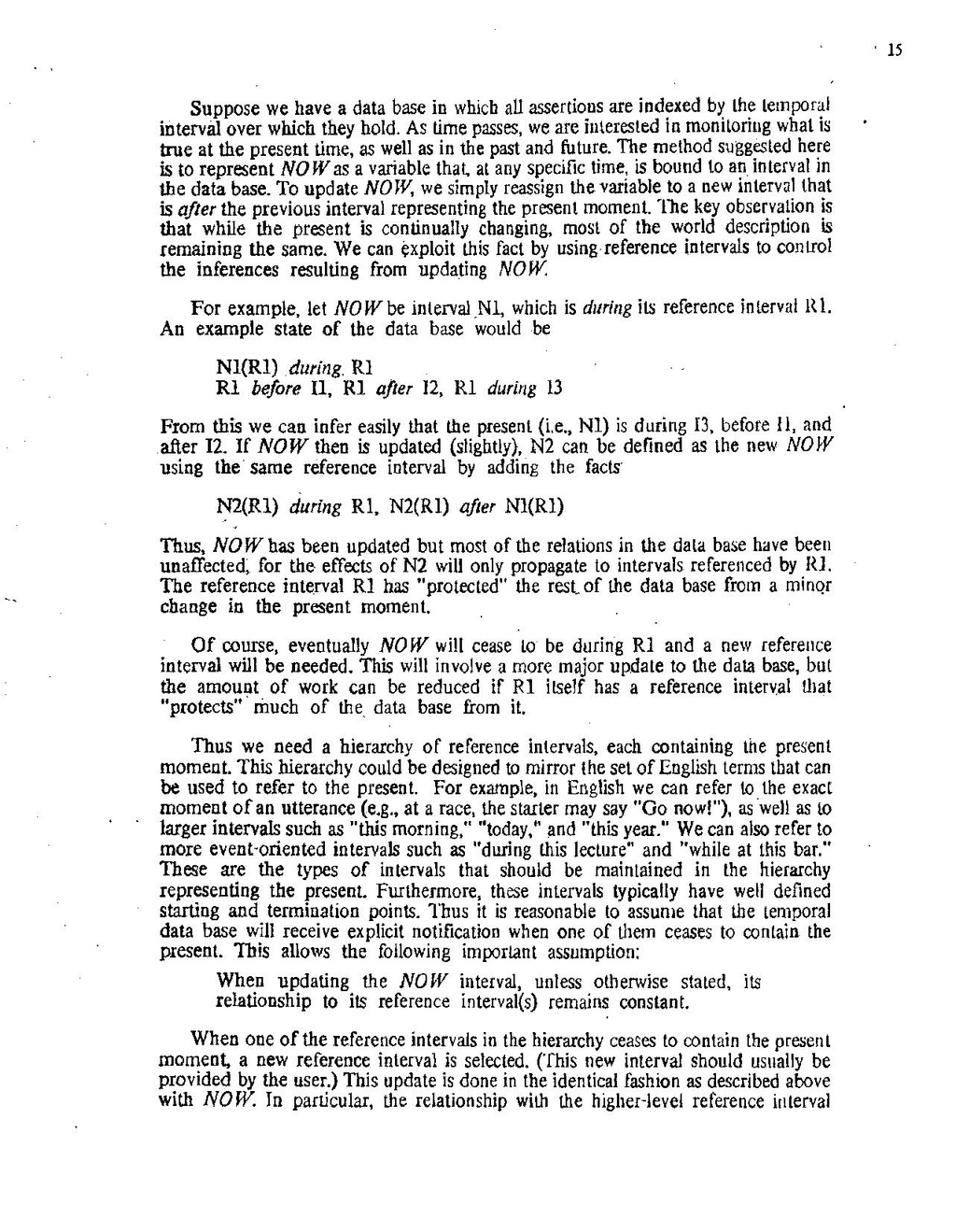Suppose we have a data base in which all assertions are indexed by the lemporal interval over which they hold. As time passes, we are interested in monitoring what is true at the present time, as well as in the past and future. The method suggested here is to represent NOW as a variable that, at any specific time, is bound to an interval in the data base. To update NOW, we simply reassign the variable to a new interval that is after the previous interval representing the present moment. The key observation is that while the present is continually changing, most of the world description is remaining the same. We can exploit this fact by using reference intervals to control the inferences resulting from updating NOW.
For example, let NOW be interval Nl, which is during its reference interval R1. An example state of the data base would be
Ni(R1) during. RI
Rl before II, Rl after 12, Rl during 13 From this we can infer easily that the present (i.e., Nl) is during 13, before 11, and after 12. If NOW then is updated (slightly), N2 can be defined as the new NOW using the same reference interval by adding the facts
N2(R1) during RI, N2(R1) after Ni(RI) Thus, NOW has been updated but most of the relations in the data base have been unaffected, for the effects of N2 will only propagate to intervals referenced by RI. The reference interval Rl has "protected" the rest of the data base from a minor change in the present moment.
Of course, eventually NOW will cease to be during Rl and a new reference interval will be needed. This will involve a more major update to the data base, but the amount of work can be reduced if Rl ilself has a reference interval that "protects" much of the data base from it.
Thus we need a hierarchy of reference intervals, each containing the present moment. This hierarchy could be designed to mirror the set of English terms that can be used to refer to the present. For example, in English we can refer to the exact moment of an utterance (e.g., at a race, the starter may say "Go now!"), as well as to larger intervals such as "this morning," "today," and "this year." We can also refer to more event-oriented intervals such as "during this lecture" and "while at this bar." These are the types of intervals that should be maintained in the hierarchy representing the present. Furthermore, these intervals typically have well defined starting and termination points. Thus it is reasonable to assunie that the temporal data base will receive explicit notification when one of them ceases to contain the present. This allows the following important assumption:
When updating the NOW interval, unless otherwise stated, its
relationship to its reference interval(s) remains constant, When one of the reference intervals in the hierarchy ceases to contain the present moment, a new reference interval is selected. (This new interval should usually be provided by the user.) This update is done in the identical fashion as described above with NOW. In particular, the relationship with the higher-level reference interval
